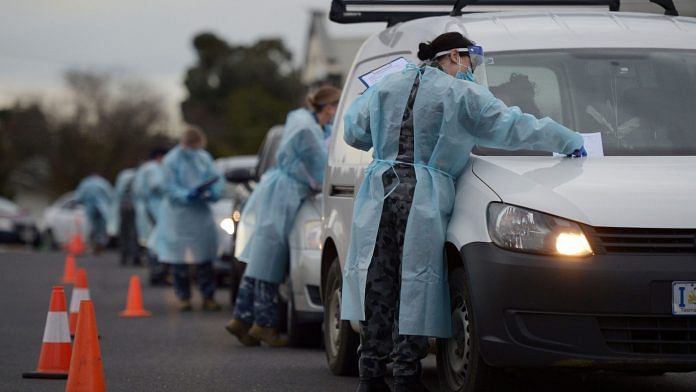Sydney/Melbourne: Public health officials bracing for a potential onslaught of coronavirus cases when summer fades in the U.S. and Europe are getting a real-time window into what the cooler weather may bring. And it’s alarming.
Deep into the Southern Hemisphere winter, Australia’s second-most populous city Melbourne is experiencing a virus resurgence that dwarfs its first outbreak back in March. The state of Victoria on Thursday reported a high of 723 new infections — nearly 200 more than its previous record set a few days earlier.
The surge epitomizes a disturbing pattern: that subsequent Covid-19 waves can be worse than the first, particularly when the conditions — like people sheltering from colder weather in enclosed spaces — are ripe for transmission. Epidemiologists, who have warned about a possible autumn resurgence in the Northern Hemisphere, are closely watching the situation in Australia.
“The whole international community and WHO has been nervous,” said Linfa Wang, director of the program in emerging infectious diseases at the Duke-NUS Medical School in Singapore. “We always said the world will be watching very closely what happens in New Zealand and Australia in the Southern Hemisphere.”
Melbourne, a city of 5 million in Australia’s southeast, locked down for a second time more than three weeks ago. While the new lockdown was set at six weeks then, it may be extended and Victoria’s Premier Dan Andrews said Thursday the regional center of Geelong, an hour southwest of Melbourne, will have curbs on home visitors.
Also read: Australia sets daily record for Covid infections as Melbourne struggles to contain virus
Low temperatures
Missteps in Victoria’s quarantine process and communication failures helped spark the second outbreak. But this time around, the virus appears to be more deeply seeded. Despite the lockdown and a scaled-up testing drive, cases have soared in the hundreds for nearly a month during the Victorian mid-winter, where the average daytime temperature is 13.5 degrees Celsius (56 degrees Fahrenheit) in July.
With more than 10,000 cases, Victoria now accounts for more than 60% of Australia’s total, shooting past the more populous Sydney, where winter temperatures are warmer and which, until a few weeks ago, had the most infections in the country.
“That just illustrates how contagious, how infectious this is,” said Thomas File, an infectious diseases physician in Akron, Ohio, and president of the Infectious Diseases Society of America, in an interview. “And that’s what’s so different about this particular virus.”
While experts have debated the precise impact of temperature on the coronavirus, Australia is providing an early glimpse of what may await northern countries after September. Many believe the pathogen will follow the pattern of seasonal flu, which tends to flare in winter and recede as spring arrives.
“Many respiratory viruses just by experience have a seasonality component when the weather is drier, cooler, more people indoors — they do a better job of transmitting from one person to another,” said Harvey V. Fineberg, president of the Gordon and Betty Moore Foundation who chairs an independent panel of experts advising the White House. “The incidence of infection tends to go up in the winter months when you’re far from the equator.”
As more signs point to a worsening outlook come winter in the Northern Hemisphere, health experts are urging greater efforts to suppress community transmission before the cooler weather arrives.
“If you lift restrictions while the virus is circulating, then you’ll have problems,” Stephen Duckett, health program director at the Grattan Institute think tank and former Secretary of the Australian Health Department. –Bloomberg
Also read: Winter is coming, expect another Covid wave, warns ex-WHO virologist who worked on SARS






